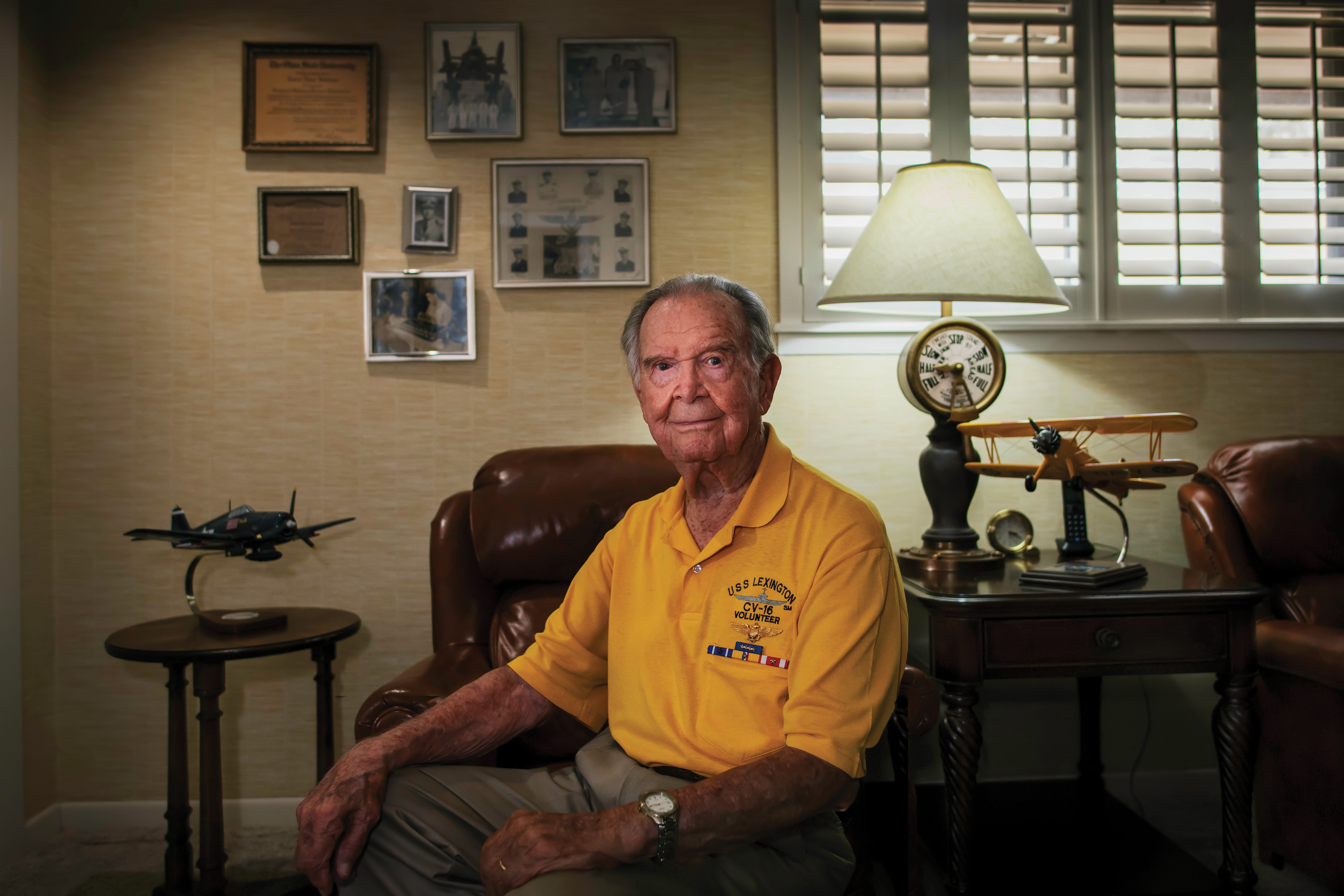
Bob Batterson
Pearl Harbor veteran
Bob Batterson
Captain, U.S. Navy
1939-1974

Seaman Bob Batterson
Long Beach, CA, 1940
Then a Jap torpedo plane… flew by every 10 to 15 seconds on their way to Battleship Row.
I was born in Mason City, West Virginia in 1921. I finished high school and joined the Navy in 1939. I was assigned to the cruiser USS Philadelphia as the powderman on a 6” turret gun. The feeling among the enlisted men was if the Japs wanted to take us on, we’d wipe them out in three months. I thought of them with buck teeth and heavy glasses. Was I ever surprised at Pearl Harbor when those pilots and gunners flew by in the torpedo planes—handsome dudes. It changed my attitude about the Japanese.
In 1941 I made 3rd class petty officer and was assigned to a big commissary store at Pearl Harbor. At night I worked in the officers’ club posting chits. On December 7, 1941 I was sleeping in the enlisted barracks with 20 other guys. We were ticked off because we thought it was a drill on a Sunday morning. Then a Jap torpedo plane flew by and we knew we were at war. One flew by every 10 to 15 seconds on their way to Battleship Row. We were less than a mile away and had a perfect view of everything.
We started to help survivors being brought in and were then ordered to a firefighting party for the Cassin and Downes destroyers, which had been bombed in dry dock. As we got into the truck to go down there, we were strafed. I don’t know how they missed us, but they did. At 9:30 it became quiet. The Japanese had canceled their third strike, which saved our necks. A third strike would have neutralized Pearl Harbor as a logistic support base.
They opened pilot training to enlisted personnel, and I put in for it. By darn, just about a year later I was in flight training. Eighteen months later I got my wings and was assigned to the Hellcat fighters. I couldn’t believe I’d be a fighter pilot. The F6 had 2800 horsepower. I’ll never forget sitting there waiting to give her a throttle and whoa! That was a thrill. We thought we’d be assigned to an operating squadron and get out there and hit the Japs. We ended up in a replacement squadron at Pearl Harbor. When the war ended in Europe, the Army Air Corps guys came through on their way to take on Japan. We got into some interesting dogfights with them.
Then we had an air collision and were told we’d lose our wings if we kept dogfighting. That ended the fun.
Our team of six fighter pilots got ship-to-shore bombardment training and joined the Bennington with VF-1. My first combat hop was spotting for the USS Massachusetts during the bombardment of the Imperial Ironworks in Kamaishi, Japan. I said, “Hot damn! At last!” There wasn’t much left of that ironworks when it was over.
After the war I requested regular Navy as an aviator, but there were 20 applicants for every vacancy. I had been a storekeeper with an excellent record, so I went through supply corps school. I got a degree in business management in 1955. Then I was selected for a master’s degree in management at the Naval post-graduate school. I retired in 1974 with the rank of captain.
I worked for the Diocese of Corpus Christi for ten years, and I’ve volunteered at the Pearl Harbor Exhibit on the Lexington for 26 years. My first wife and I were married 55 years and had five kids. I’ve been married to Hilda for 17 years. I’m 98 and no spring chicken, but I’m determined that I’m going to help our country as long as I’m able. {09-20-2019 • Corpus Christi, TX}